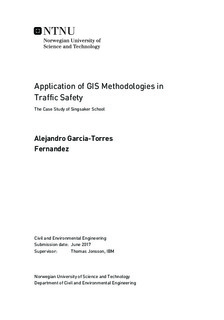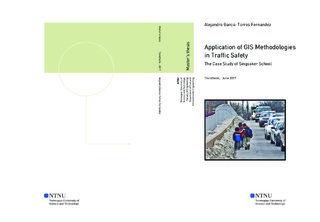| dc.description.abstract | This research investigates the feeling of insecurity that parents have regarding their children s journeys to school. Parents, professors, and many other professionals were included in a survey to rate the different features that children might encounter when walking along and crossing the streets on their routes to school. By giving the street network an impedance attribute known as insecurity with regards to the issue of motorized traffic and street infrastructure, the idea is to assess the accessibility from children s homes to school from this different viewpoint. Using feeling of insecurity during accessibility analysis, planners and engineers can assess the school environment when identifying dangerous locations or areas that require improvement.
The methodology used to rate streets is the utilization of a stated-preference survey followed by a Multi Criteria Analysis (MCA) and Analysis Hierarchy Process (AHP).Moreover, this research presents one particular method for developing an accurate street network, representing where pedestrians can walk and cross the street, from a dataset containing the center line of a street network (typically designed for motorized vehicles). Once the street network is created, the attributes required for such a network to perform the analysis are presented and also the source of the data used when populating each attribute.
The original idea of a traffic safety impedance comes from the Federal Highway Administration of Washington DC (FHWA), which developed a methodology to rate streets and crossings according to different parameters. This methodology is modified in this research and is combined with a Multicriteria Analysis (MCA) and Analysis Hierarchy Process (AHP) to perform an analysis based on a subjective perception of insecurity experienced on streets. The model will look for streets with width sidewalks, also separation of motorized traffic and vulnerable road users, and finally low speed limit and traffic flow. On the contrary, this model will avoid busy intersections or streets with higher speed limit and heavy traffic volume.
Finally, a case study is performed which applies all the methodology presented here in order to demonstrate a real life case where such methodology might be of use. The case study uses one primary school in the city of Trondheim (Norway), creating a pedestrian network within the school boundary, and performing an analysis that attempts to identify problematic locations where traffic safety measures may be necessary. This research aims to present a useful tool for assessing children s traffic safety and could be used along with traffic safety audits. | |

